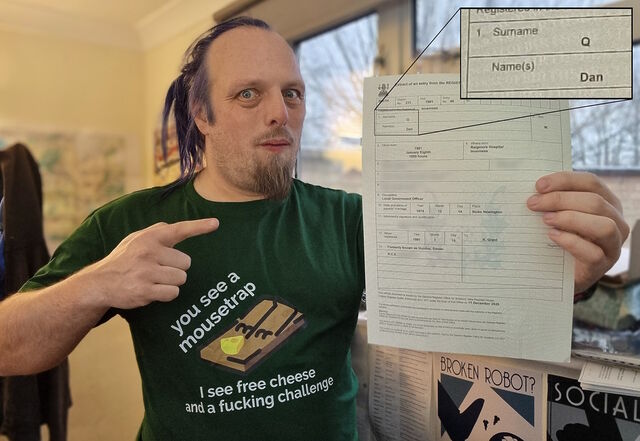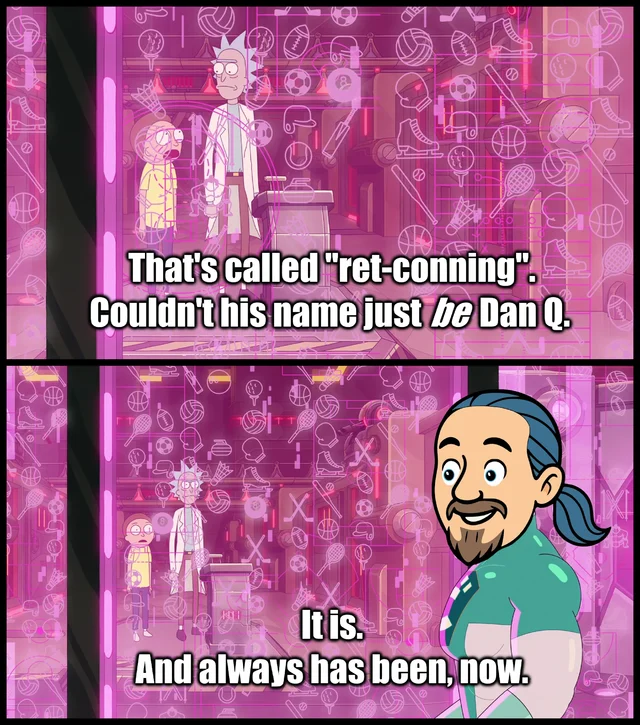I’ve been going by the name Dan Q for almost 19 years… so like two-thirds of my adult life. I haven’t even needed to show a deed poll to anybody in over a decade1
But just sometimes, somebody asks2 “Yeah, but what does your birth certificate say?”

It didn’t used to say “Dan Q”, but nowadays… yes, that’s exactly what my birth certificate says.
Y’see, I was born in Scotland, and Scottish law – in contrast to the law of England & Wales4 – permits a change of name to recorded retroactively for folks whose births (or adoptions) were registered there.
And so, after considering it for a few months, I filled out an application form, wrote an explanatory letter to help the recipient understand that yes, I’d already changed my name but was just looking for modify a piece of documentation, and within a few weeks I was holding an updated birth certificate. It was pretty easy.

I flip-flopped on the decision for a while. Not only is it a functionally-pointless gesture – there’s no doubt what my name is! – but I was also concerned about what it implies.
Am I trying to deny that I ever went by a different name? Am I trying to disassociate myself from my birth family? (No, and no, obviously.)
But it “feels right”. And as a bonus: I now know my way around yet another way for (some) Brits to change their names. Thanks to my work at FreeDeedPoll.org.uk I get an increasing amount of email from people looking for help with their name changes, and now I’ve got first-hand experience of an additional process that might be a good choice for some people, some of the time5.
Footnotes
1 By the time you’ve got your passport, driving license, bank account, bills etc. in your name, there’s really no need to be able to prove that you changed it. What it is is more-important anyway.
2 Usually with the same judgemental tone of somebody who insists that one’s “real” name is the one assigned closest to birth.
3 If you’re zooming in on the details on that birth certificate and thinking “Hang on, he told me he was an Aquarius but this date would make him a Capricon?”, then I’ve got news for you about that too.
4 Pedants might like to enjoy using the comments to point out the minority of circumstances under which a birth certificate can be modified retroactively – potentially including name changes – under English law.
5 I maintain that a free, home-made deed poll is the easiest and cheapest way to change your name, as a British citizen, and that’s exactly what FreeDeedPoll.org.uk helps people produce… and since its relaunch it does its processing entirely in-browser, which is totally badass from both a hosting and a user privacy perspective.








